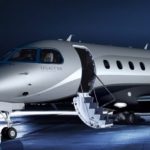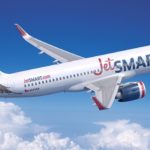Boeing reports that over the next 20 years the Middle East will see significant demand for commercial airline pilots, technicians and cabin crew, accounting for 10% of the overall global need for pilots and technicians and 12% of cabin crew.
The 2017 Boeing Pilot & Technician Outlook, an industry forecast of aviation personnel demand, saw an increase in the forecast over the last year, with pilot demand increasing to 63,000 (an 8.6% increase) and cabin crew demand increasing to 96,000 (a 4.3% increase). While anticipated overall global demand for technicians dropped 4.6% from last year, anticipated demand for technicians in the Middle East remained steady at 66,000.
“With the anticipated demand for pilots, technicians and cabin crew in the Middle East, there is clearly a tremendous need to ensure personnel are available to fill those roles,” said David Longridge, vice president of Commercial Services Sales for Boeing Global Services.
He added: “It is an exciting time to explore how we can use cutting-edge tools and technology today to train these crews for tomorrow.”
New airplanes
With new airplane deliveries to the region forecasted to be split nearly 50-50 between single-aisle and twin-aisle airplanes, there is a similar split in anticipated personnel demand. Nearly half of new pilots and technicians will be needed to support single-aisle airplanes, and the other half will be needed to support twin-aisle airplanes.
The split for cabin crew, however, is more heavily weighted toward twin-aisle airplanes due to regulations that require more cabin crew to staff larger airplanes.
The Boeing Pilot & Technician Outlook is closely tied to projections for new airplane deliveries around the globe. As with personnel demand, the Middle East also is expected to require a significant number of airplane deliveries over the next 20 years. According to Boeing’s 2017 Current Market Outlook, 3,350 new airplanes valued at $730 billion will be needed in the Middle East region by 2036.

